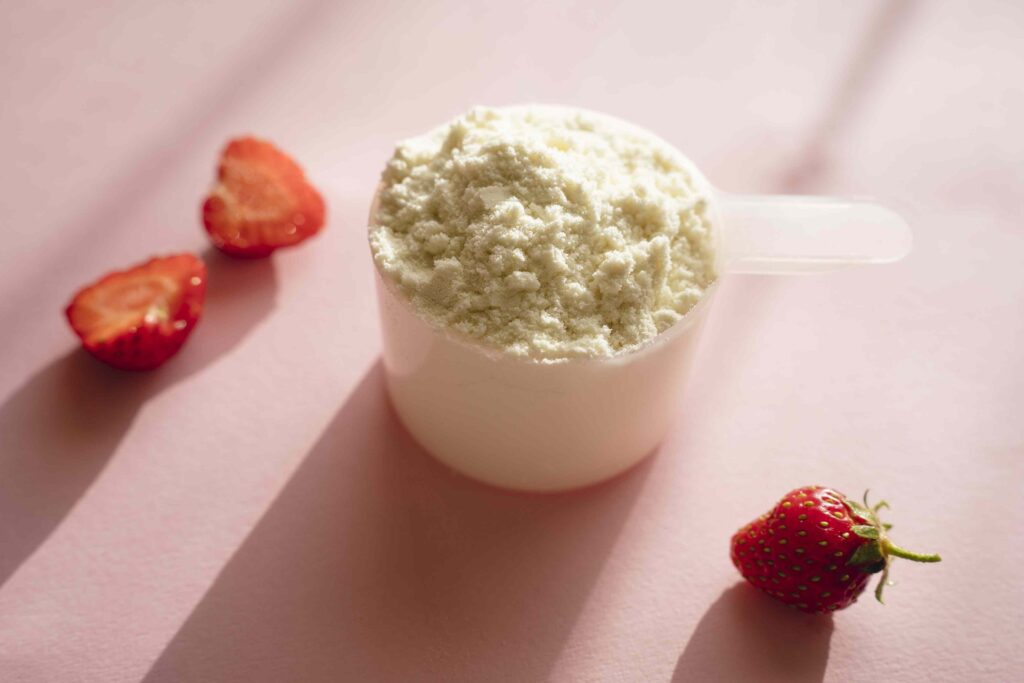Some people expect to see quick improvements in their strength, endurance, and brain health when they start to take creatine. While this is possible, specially if you started with a loading phase, the most-promising results come from consistent use and an appropriate training regimen.
If you are considering taking creatine, here is what you need to know about how long it takes to work, whether you’re taking it during a loading phase, or a maintenance phase.
Creatine is a popular and highly-researched supplement that people use to build muscle and maintain energy during intense workouts, according to Amanda Grimm, PT, a physical therapist, running coach, and sports and remedial massage therapist for Knead Massage. It’s generally used in two ways—during a loading phase or for maintenance.
- Loading phase: “When it’s used in a loading phase—typically 20 grams a day for five to seven days—most see benefits such as added muscle volume or improved performance at the gym within one to two weeks,” said Grimm.
- Maintenance phase: “When used at maintenance levels—typically 3 grams to 5 grams a day—results will likely be seen within three to four weeks, since it takes longer for muscles to reach saturation levels. However, both strategies will give benefits over time,” said Grimm.
The loading phase is often used to jumpstart the concentration of creatine within the muscles in a relatively short amount of time, Kristin Kirkpatrick, MS, RDN, a registered dietitian with Cleveland Clinic Department of Wellness and Preventive Medicine, told Health. After that time period, the maintenance phase consists of regular or standard doses of approximately 3 grams to 5 grams daily. This phase is meant to maintain the creatine in the muscles.
The latest recommendation is to take 3 grams to 5 grams a day, or what is recommended for the maintenance phase, Stephanie Magill, MS, RD, CD, FAND, a registered dietitian and owner of Soccer Mom Nutrition, told Health. This takes a little longer for muscle saturation but generally reduces the side effects people experience, like bloating or GI upset.
There is clear evidence that creatine offers benefits. But, as with most things in health, there are are lot of different factors at play that will determine your results and when you see them such as your exercise routine, current fitness level, diet, age, and weight.
Here are some potential results from supplementing with creatine:
- Improved strength and better endurance: Most people using creatine will see changes during the first few weeks, according to Grimm.
- Increased muscle size: You also may notice a change in your muscle volume in the first few weeks, but Grimm says this is initially influenced by water retention.
- Improved cognitive function: With consistent use, you may also notice long-term improvements in cognitive function. According to Kirkpatrick, as concentrations within the brain rise, creatine can benefit people with neurodegenerative diseases and potentially even improve cognition in people with Alzheimer’s.
- Body composition changes: Over time, Magill says the improvements in time to exhaustion, training tolerance, and muscle endurance may result in some improvement in body composition because you’re potentially able to lift more and workout longer and harder. However, these results will be more long-term and not immediate.
As with anything, you have to be consistent and take creatine at about the same time every day to see results. “However you’re not likely to see benefits from creatine without resistance training and aerobic training, which will support adaptations,” said Magill.
To maximize your results, pair your creatine consumption with a resistance training regimen that has enough intensity and frequency to promote future strength gains.
“It may be beneficial to consume your creatine before or after your training, given the fact that muscles are most active around this time,” Ben Emminger, an NASM-certified nutrition coach and an NASM-certified sports nutrition coach with Garage Gym Reviews, told Health. “Hydration is also important since creatine can increase your muscles’ abilities to retain water.”
Emminger and Grimm also recommend that you:
- Speak to a healthcare provider prior to beginning your supplement regimen
- Discuss whether or not a loading phase is right for you given the potential side effects
- Maintain a regimented supplement protocol that includes taking creatine daily in the serving sizes recommended by a healthcare provider
- Pair your creatine supplement with foods high in carbohydrates and protein, as this can potentially help improve creatine absorption
- Stay well-hydrated when using the supplement and implementing smart recovery habits
“Creatine is not a miracle substance that automatically generates strength gains,” said Emminger. “You need to maintain a well-established resistance training routine if you’re aiming for improved muscle strength and size.”
If you take creatine, you’re likely to see results in three to four weeks, unless you implement a loading phase. In that case, you may see initial improvements in strength and endurance within the first week or so.
Regardless of whether you implement a loading phase or stick to the recommended dosage of 3 grams to 5 grams a day, you also need to be consistent about when and how you take the supplement.
You also should exercising regularly, staying hydrated, and pairing your supplement with foods high in carbs and proteins in order to see results.


